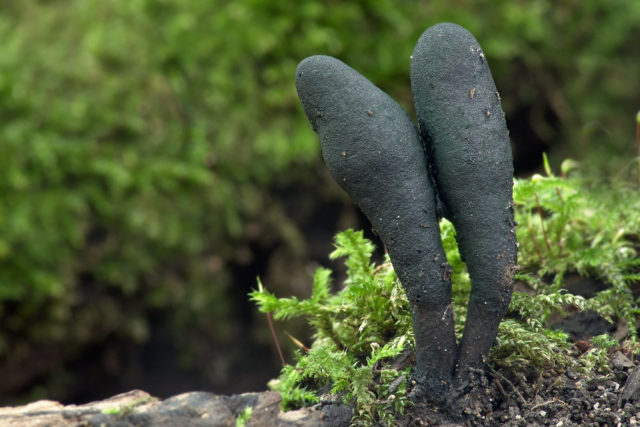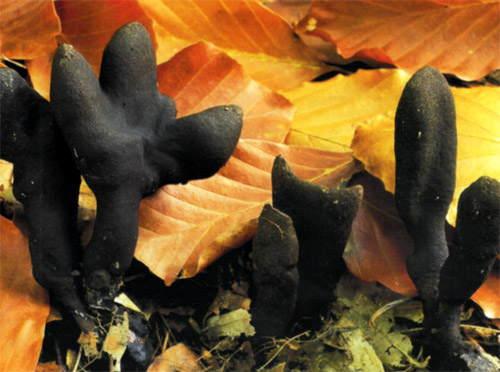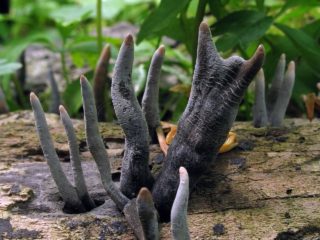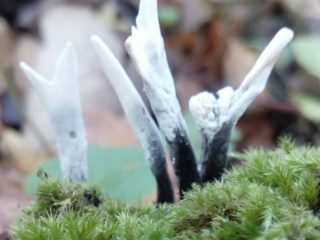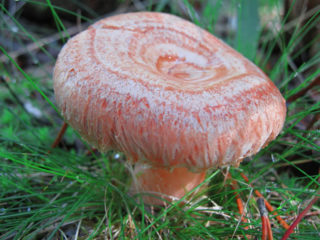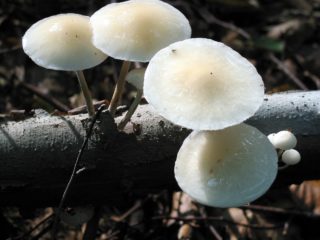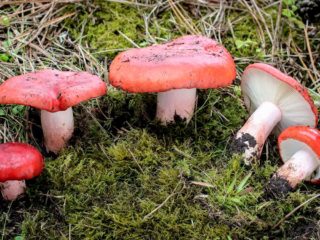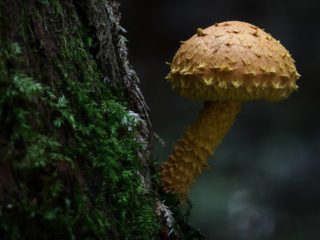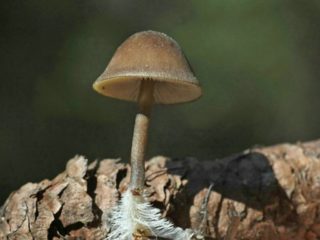Content
The mushroom kingdom is diverse and you can find amazing specimens in it. Xylaria longlegs is an unusual and frightening mushroom; it is not without reason that people call it “dead man’s fingers.” But there is nothing mystical about it: the original elongated shape and dark color with light tips resemble a human hand sticking out of the ground.
What do long-legged xylaria look like?
Another name for this species is polymorphic. The body has no obvious division into a stem and a cap. It can reach a height of 8 cm, but usually grows small - up to 3 cm. The diameter does not exceed 2 cm, the body is narrow and elongated.
It is club-shaped with a slight thickening at the top; it can be mistaken for a tree branch. Young specimens are light gray; with age, the color darkens and turns completely black.Small shoots on the ground are difficult to notice.
Over time, the surface of the fruiting body also changes. It becomes covered with scales and cracks. The spores are small, spindle-shaped.
There is another type of xylaria - diverse. It differs in that several shoots emerge from one fruiting body at once, hard to the touch and rough, reminiscent of wood. Inside, the pulp consists of fibers and is colored white. It is quite tough, so it is not eaten.
The young fruiting body is covered with asexual spores of purple, gray or light blue color. Only the tips remain free of spores, retaining a whitish color.
The upper part of the fruiting body is slightly lighter in adulthood. Xylaria longlegs can become covered with warts over time. Small holes appear in the cap to release spores.
Where do long-legged xylaria grow?
It is a saprophyte, so it grows on stumps, logs, rotten deciduous trees, and branches. Representatives of this species are especially fond of fragments of maple and beech.
Long-legged xylaria grow in groups, but there are also single specimens. This type of fungus can cause gray rot in plants. In the Russian climate it grows actively from May to November. Appears in forests, less often on the edges.
The first descriptions of Xylaria longlegs were found in 1797. Before this, there was a single mention of the fact that parishioners of an English church discovered terrible mushrooms in a cemetery. They looked as if the fingers of the dead, black and twisted, were climbing out of the ground. Mushroom shoots were everywhere - on stumps, trees, the ground. Such a sight frightened people so much that they refused to enter the cemetery.
The churchyard was soon closed and abandoned.This spectacle is easy to explain from a scientific point of view. Xylaria long-legged actively grows on stumps, rotten and dilapidated wood. Can form at the roots of deciduous trees. They are found all over the world. In some regions, the first long-legged xylaria appear in early spring.
Is it possible to eat long-legged xylaria?
Xylaria longlegs is an inedible species. Even after cooking for a long time, the pulp is very hard and difficult to chew.
Mushrooms of this type do not differ in any taste or smell. During cooking, they attract insects - this must be taken into account if you want to experiment.
In traditional medicine, a substance used to create diuretics is isolated from xillaria. Scientists plan to use these fruiting bodies to develop drugs for oncology.
Conclusion
Xylaria longlegs has an unusual color and shape. At dusk, mushroom shoots can be mistaken for tree branches or gnarled fingers. This species is not poisonous, but is not used as food. In nature, these representatives of the fungal kingdom perform a special function: they accelerate the process of rotting trees and stumps.

